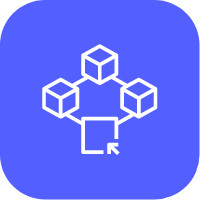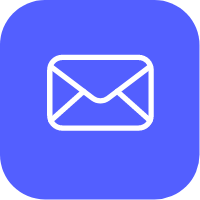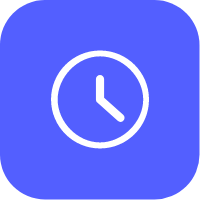
Event Management (SaaS)
Project Overview
As a part of our graduate capstone, we partnered with Gravity Drive, a design consulting firm in Fishers, Indiana to address a significant challenge in the event management industry: the lack of a comprehensive, all-in-one event management solution.
Our primary task to identify problems in the event management space if there are any and come up with a solution to tackle those issues.
Challenge
Our initial research revealed that the event management landscape is fragmented, with venues relying on disparate systems for tasks like excel sheets for booking records, emails for communication, and other options for payments, venue visualization and customization.
This fragmentation creates a disjointed experience for both event organizers and clients, leading to potential miscommunications, missed deadlines, and increased workload and even lost revenue.

Decentralized Management
4 out of 5 visited venues used a decentralized combination of programs to manage their events.

Communication Problems
Long email threads made communicating with clients difficult and hard to follow.

Inefficient Workflow
Event organizers wanted easier and efficient way to manage venue resources and customer needs.
Project Type
HCI Capstone with Gravity Drive
Role
UX Researcher and Designer
Duration
September 2023 - April 2024
Teammates
Austin Coon, Daivik Chauhan, Christopher Valdez
Solution
Judging from the lack of uniformity across the event management space we decided to incorporate various steps throughout the event management space into a single application which would be right from booking and planning to payments.
We recognized the need for a unified solution that would simplify event planning and execution while enhancing collaboration between all stakeholders.
1. Research
We started things off with understanding Gravity Drive's vision for the event space, looking into the event management landscape, as this was a new venture for the company, we were to lay the building blocks of this product.
Following up with a Literature review of what has been done in this industry, we looked at what problems are still persistent, learning about the technology and benefits of using an event management solution. We found that integrating technology would help venues same time and resources thus increasing revenue.
1.3 Research Insights
• 4 out of 5 venues visited currently use Excel sheets to keep track of upcoming events. There is a need for a streamlined digital booking system.
• Communication is a big issue with event planners relying solely on emails and sometimes text messages.
• Event managers face hurdles keeping all parties updated on tasks and changes throughout the lifecycle of the event.
• 80% venues expressed their interest for a event management system to help reduce their workload.
3. Ideation and Designing
Focusing on our 3 main design goals, for the next month and a half we focused solely on the design and iteration part of the product and how we will integrate different features.
Our Industry Partner, Michael Miserendino, Owner of Gravity Drive, helped us immensely throughout the ideation and design phase guiding us with his expertise and providing valuable insights.
4. Prototyping and Usability Testing
Following the completion of our low-fi design phase we created hi-fidelity prototype, started contacting venues we visited earlier and asked them if they would help in testing out the prototype. We conducted 5 test sessions with venue owners and managers testing out a predefined list of tasks.
Using a task/scenario based approach helped us focus on the core functionality of the application.
Scenario
"You are Sam Reynolds, an event manager for the Holiday Event Center. Holiday Event Center has recently updated its venue management process to use a new event management application.
The hope is that this system will improve the workflow of the event center and make everyone’s jobs a little bit easier. The owner has added some information to the new system and has asked you to test it out and familiarize yourself with how it functions.
You have just begun your work day and will be using the new system to complete some standard work tasks."
The Process
As this was our capstone project and we had two semesters, breaking down the design process into two steps made sense. Our first step consisted of background research and analysis (defining the user) that gave us actionable insights for our next step which was ideation, design followed by testing.

1.1 Competitor Analysis
We performed competitive analysis with 7 products in the event space categorizing the features like event management, venue management, etc. and rated them with the Harvey balls method.
This was a holistic review based on personal experience, customer reviews and general observation.

Brainstorming
We did around 12 ideation and brainstorming sessions between February and April. These sessions generated innovative ideas for the features and functionality. We continuously refined our designs based on reviews from our partner. This ensured our concepts closely matched user needs.



1.2 Site Visits and Interviews
In total we conducted 5 site visits covering various event venues and co-working spaces, where we interviewed venue managers and owners to get their perspective on event management.
We also got a tour of the location to get an idea of various offerings from the venues like open spaces, kitchen areas, bar setups which would later help us in the customization aspect of our product.

Information Architecture
After we concluded with the brainstorming and finalizing on our key features and pages we laid out the information architecture to decide how different parts of the application would connect together and how complex it will actually be.
Time being the major concern, we had to cut some features that we ideated on, like the staff management section and we also streamlined the venue finances section to a bare minimum finance screen.

2. Analysis
We started this phase by creating two personas of our target users (venue owner and manager) by drawing from the interviews we had conducted previously.
.png)
2.1 Persona Goals
-
Create memorable experience for the client from booking to execution.
-
Seamlessly manage multiple events at once.
-
Attract new clients and event types.
-
Communicate effectively and build relations.
2.2 Design Goals
Initially we planned to have a lot of features that were evident from our research like venue on-boarding, event customization, event management, space selection, communication, payments and event visualization. But due to the limited time constraint we had to make a difficult choice of narrowing down our goals.
Finally we decided with these three goals to accommodate our time constraint.
01
Event Planning
Event planning and customization including services like music, food and decor with budget visualization.
03
Communication
A communication channel for each event with group and private chat and a repository for storing and sharing related files.
02
Task Management
Creating event related tasks and assigning them to the staff based on priority.
Sketching
We were actively sketching screens while we ideated as well to get a grasp of how different features would work together.
During almost all of our ideation sessions we engaged in iterative sketching where we individually designed screens and then compared our designs and critiqued each other.


Task 1
Identify the most important task, complete it and mark it as completed.
Completion rate: 100% (partial success).
Participants were able to locate the task with highest priority but were not able to connect it with the associated event.

Task 2
Create a high priority task and assign it to a staff member.
Completion rate: 80% (complete success).
They could easily locate and create tasks, while some struggled with assigning 'priority' and connecting the task to an event.

4.1 Testing Feedback
We started our testing sessions by conducting a brief interview of the participant to understand their daily workday and what tasks they do throughout their day, followed by the testing and concluded with a final round of questions to determine user satisfaction.
Here are the qualitative insights from the test sessions
01
Navigation Issues
Users confused contacts (which was a potential client) for messaging (which was for existing event communication).
02
Information Overload
Users found the messaging section to be overwhelming in the sense that it has files and chat options integrated.
03
Universal Search
Users requested a universal search feature throughout the application (although this maybe because of their unfamiliarity with the application).
04
Event Association
Users sometimes failed to associate a certain person with the event and hence were stuck between tasks.
What did the users like??
Users expressed interest in the product and mentioned that they liked certain aspects of the product such as -
01
All - Inclusive
Users liked that the system was a one stop solution for all their needs including Messaging, Event tracking, Customization and other options.
02
Smaller Learning Curve
Users found it less complex and easier to adapt to than other similar applications they've used in the past.
03
Event Customization
Users were awed by the different customization options like food, music, decor with even tables and chair and drapery.
04
Analytics
Users liked the analytics option on the dashboard for tracking venue progress and see how their venue is performing overtime.
Task 3
a. Find if someone messaged you regarding a change in the event decoration.
b. Make the change requested.
c. Inform them that the changes have been made.
Completion rate (a): 60% (partial success).
Completion rate (b): 60% (partial success).
Completion rate (c): 100% (complete success).
No users could complete all three parts of the task, almost all the participants were confused between the mail icon and the contacts section on the navbar.

Learning Outcomes
This project highlighted the importance of iteration and not rushing with the design, we spend almost 80% of our time in research and ideation phases re-iterating on our low-fi designs until we reach a solid foundation of features.
It also showed that field research is a must!!, meaning - "getting in the shoes of the user", we interviewed event managers and owners to understand their problems and determine the root cause of the issue.